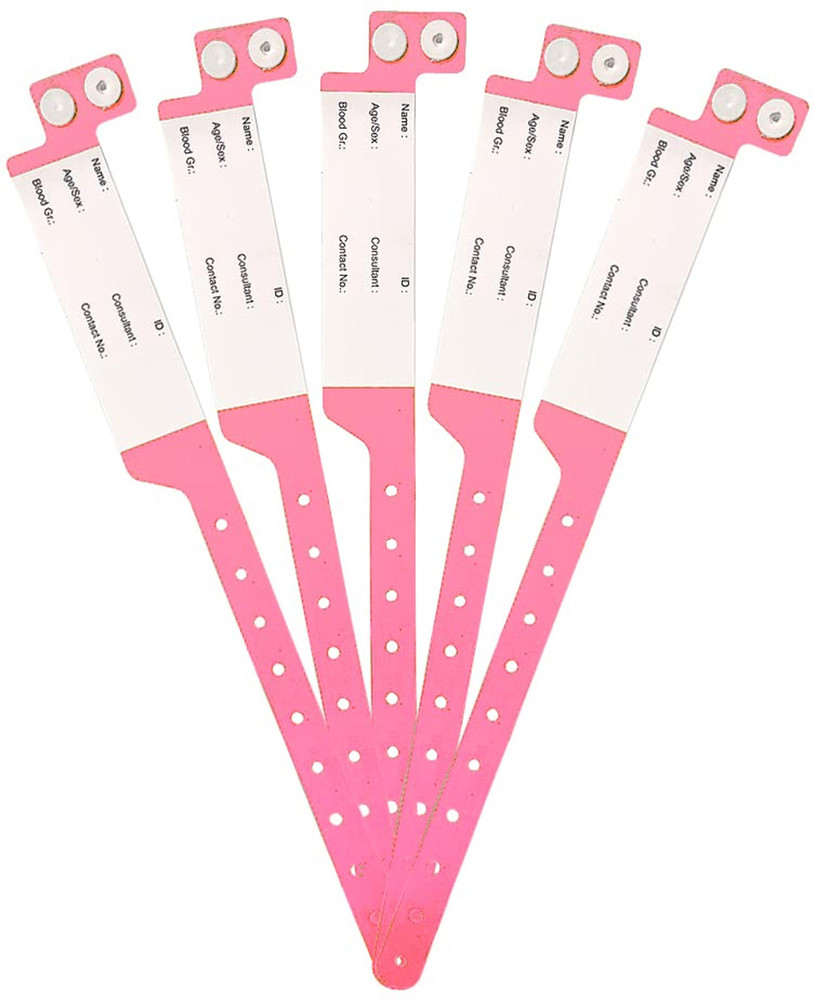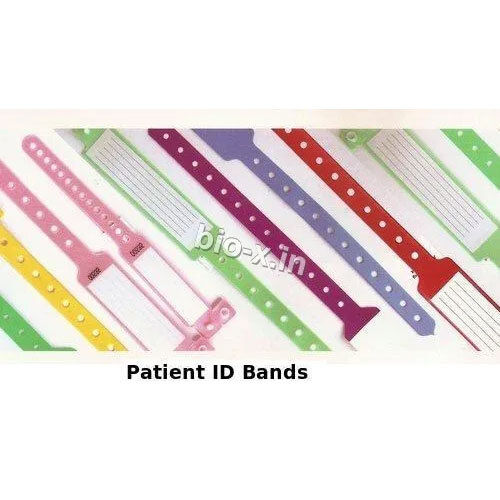Exploring the Advantages of a Patient Identification Band in Preventing Medical Errors
Exploring the Advantages of a Patient Identification Band in Preventing Medical Errors
Blog Article
Exploring the Different Kinds Of Patient Identification Band Used in Clinical Facilities
In the complex world of health care, the crucial function of Patient Identification bands commonly goes undetected. These bands, varying from basic paper wristbands to advanced RFID bands, develop the foundation of Patient safety procedures, ensuring precision in Patient Identification.
Recognizing the Significance of Patient Identification Bands
While they might feel like simple devices, Patient Identification bands play an important function in clinical facilities. These bands act as an important device for confirming Patient identity, stopping clinical mistakes associated with misidentification. The bands normally present important info such as the Patient's name, age, blood kind, and any kind of well-known allergic reactions. They allow health care experts to swiftly access this essential information, thereby helping with precise and prompt medical treatment. Patient Identification bands also aid in streamlining administrative tasks, making certain exact record-keeping and billing. Despite their simplicity, these bands embody the concept of Patient safety and security, a keystone of top quality healthcare. Without them, the danger of medical errors, and subsequently, Patient damage, may substantially enhance.
Traditional Paper Wristbands: Their Use and Limitations
Standard paper wristbands have been a staple in Patient Identification throughout different medical centers. While their usage prevails, they nurture specific constraints that might impact their performance in Patient monitoring. This area will concentrate on the scope of their application and the integral disadvantages related to their usage.
Paper Wristbands: Usage Range
In the realm of Patient Identification, paper wristbands have actually long held an essential duty. These bands are generally utilized in outpatient setups, where the Patient's remain is short-lived. Regardless of advancements in technology, the simple paper wristband stays a cost-effective and trusted option for Patient Identification in various healthcare scenarios.
Limitations of Paper Wristbands
In spite of their widespread usage, paper wristbands are not without their drawbacks. Their physical resilience is among the significant constraints. Direct exposure to water, sweat, or harsh handling can provide them unreadable or perhaps trigger them to break down. Additionally, paper wristbands frequently lack the technical capacities of even more contemporary alternatives, such as barcoding or RFID chips, restricting their capability to simply showing written details. The lack of ability to update or modify the information on the wristband is one more drawback. Furthermore, if the details is transcribed, clarity can be compromised, bring about prospective misidentification. Paper wristbands can cause pain or skin irritation to some people, particularly when worn for prolonged periods.
Barcoded Wristbands: Innovations in Patient Identification
While Patient Identification has long been an essential aspect of health care, the advent of barcoded wristbands represents a substantial leap ahead. These bands utilize the simplicity of barcoding innovation, enabling Patient details to be quickly scanned and accessed. They boost the rate and accuracy of Patient Identification, minimizing the threat of medical errors connected to misidentification. Barcoded wristbands are cost-efficient, easy to produce, and get rid of handwriting mistakes usual with hands-on systems. Nonetheless, they official source are not without restrictions. While they supply renovations over traditional bands, the barcode can become used or smudged, rendering it unreadable. In spite of this, barcoded wristbands stay a crucial device in modern healthcare setups, signifying the junction of technology and Patient treatment.
Superhigh Frequency Identification (RFID) Bands: an Action Towards Futuristic Healthcare
The evolution of Patient Identification bands has brought about the emergence of Radio Regularity Identification (RFID) Bands (patient identification band). These ingenious devices existing crucial advantages for healthcare centers, using a much more efficient and highly progressed ways of Patient Identification. The implementation of RFID in healthcare is a substantial step towards an extra futuristic approach to Patient management and safety and security
Recognizing RFID Bands

RFID Bands: Trick Benefits
Primarily, these bands enhance Patient safety and security by giving accurate, instant Identification, therefore reducing medical errors. RFID bands can keep a huge quantity of Patient information, including medical history and allergies, allowing individualized treatment. Overall, RFID bands stand for a substantial advancement in Patient Identification technology, benefiting both patients and healthcare companies.
Carrying Out RFID in Health Care
These bands give a smooth way to track and determine patients, guaranteeing their security and improving effectiveness in treatment procedures. RFID bands minimize clinical errors by giving precise Patient Identification, which is critical in avoiding misdiagnosis or incorrect medication management. Hence, the application of RFID bands is a substantial step in the direction of boosting Patient safety and security and healthcare shipment.

Color-Coded Wristbands: Assisting in Quick and Accurate Medical Diagnosis
In the bustling atmosphere of a clinical center, color-coded wristbands have arised as vital tools for swift and specific Identification of a client's clinical problem. These wristbands, worn by clients, lug imp source specific colors that correspond to different medical conditions or conditions. This system is created to offer immediate visual hints to medical care service providers, improving Patient security and care top quality.
Strategies for Effective Application and Administration of Patient ID Bands
Attaining optimal use Patient Identification bands necessitates a well-structured strategy for their implementation and management. The primary step involves training all health and wellness workers on the value of properly using and checking out these bands. Health centers need to systematize the use of ID bands across all departments, ensuring harmony and minimizing inconsistencies. Routine audits ought to be conducted to validate adherence to plans and to remedy any type of disparities. Patient education and learning is likewise important; clients must recognize the function of the bands and the requirement for their constant wear. patient identification band. It's crucial to have a back-up plan in area, such as barcode scanning or biometrics, to guarantee that Patient Identification is never jeopardized.
Verdict
Patient Identification bands are critical in medical centers to guarantee safety and security and accuracy. Standard paper, barcoded, RFID, and color-coded wristbands each hold unique advantages, varying from cost-effectiveness to advanced data storage space and instant medical informs. Effective application and monitoring of these bands can significantly minimize clinical mistakes, increase effectiveness, and boost overall Patient care. Hence, understanding and making use of these Identification tools is critical for keeping high criteria in healthcare.
These bands, differing from simple paper wristbands to advanced RFID bands, form the backbone of Patient safety protocols, guaranteeing precision in Patient Identification.The evolution of Patient Identification bands has actually brought concerning the appearance of Radio Regularity Identification (RFID) Bands. On the whole, RFID bands stand for a substantial innovation in Patient Identification innovation, benefiting both clients and healthcare service providers.
RFID bands decrease medical mistakes by giving exact Patient Identification, which is essential in avoiding misdiagnosis or wrong medicine management. Patient education is likewise essential; clients have to recognize the objective of the bands and the demand for their consistent wear.
Report this page